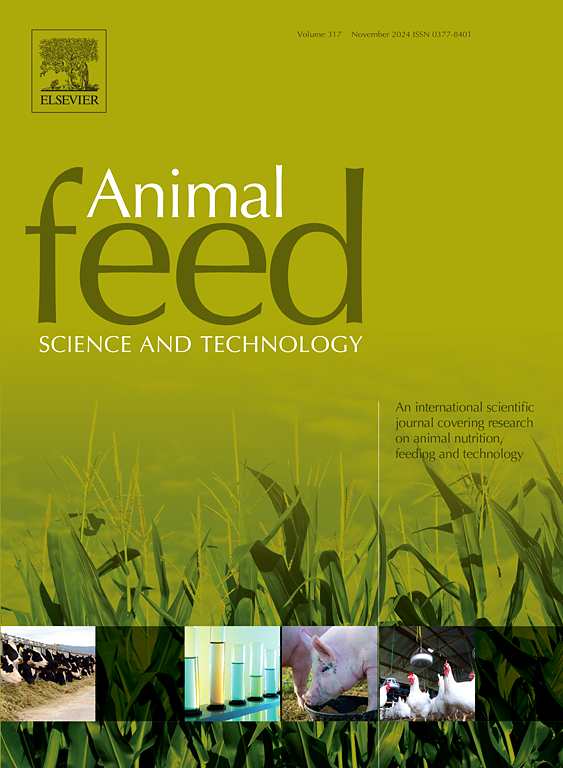The role of propionic acid as a feed additive and grain preservative on weanling pig performance and digestive health
IF 2.5
2区 农林科学
Q1 AGRICULTURE, DAIRY & ANIMAL SCIENCE
引用次数: 0
Abstract
This study aimed to determine the effects of propionic acid (PA) as a grain preservative and feed supplement on piglet growth and health post-weaning (PW). Grain was dried or preserved with 4 kg/tonne of PA post-harvest, and PA was supplemented or not at 4 kg/tonne during diet manufacture. Ninety-six weaned piglets were assigned to a 2 × 2 factorial design: (T1) dried grain diet, (T2) preserved grain diet, (T3) dried grain diet with PA and (T4) preserved grain diet with PA for 35 days. Each diet contained 450 g/kg of wheat and 150 g/kg of barley, either dried or preserved. Ten days PW, 28 piglets (n = 7) were euthanised for sample collection. Preserved grain reduced ochratoxin A and deoxynivalenol levels and increased body weight, average daily gain and average daily feed intake compared to dried grain (P < 0.05). Supplementing PA increased the relative abundance of Faecalibacterium in the dried grain diet, but reduced Faecalibacterium in the preserved grain diet. Supplementing PA reduced ileal Escherichia in dried grain, but increased Escherichia in preserved grain (P < 0.05). Supplementing PA increased colonic Clostridium in preserved grain but had no effect on Clostridium in dried grain (P < 0.05). Supplementing PA reduced inflammatory cytokine expression in the duodenum (IL1B/CXCL8/IL17/IL22/TLR4), jejunum (IL17/IL22) and ileum (IL22) compared to non-PA supplemented diets (P < 0.05). In conclusion, preserved grain improved grain quality, microbial populations and growth. Supplementing PA reduced intestinal inflammatory markers, suggesting potential as a feed additive in stress-inducing commercial settings.
求助全文
约1分钟内获得全文
求助全文
来源期刊

Animal Feed Science and Technology
农林科学-奶制品与动物科学
CiteScore
6.00
自引率
6.20%
发文量
266
审稿时长
3 months
期刊介绍:
Animal Feed Science and Technology is a unique journal publishing scientific papers of international interest focusing on animal feeds and their feeding.
Papers describing research on feed for ruminants and non-ruminants, including poultry, horses, companion animals and aquatic animals, are welcome.
The journal covers the following areas:
Nutritive value of feeds (e.g., assessment, improvement)
Methods of conserving and processing feeds that affect their nutritional value
Agronomic and climatic factors influencing the nutritive value of feeds
Utilization of feeds and the improvement of such
Metabolic, production, reproduction and health responses, as well as potential environmental impacts, of diet inputs and feed technologies (e.g., feeds, feed additives, feed components, mycotoxins)
Mathematical models relating directly to animal-feed interactions
Analytical and experimental methods for feed evaluation
Environmental impacts of feed technologies in animal production.
 求助内容:
求助内容: 应助结果提醒方式:
应助结果提醒方式:


